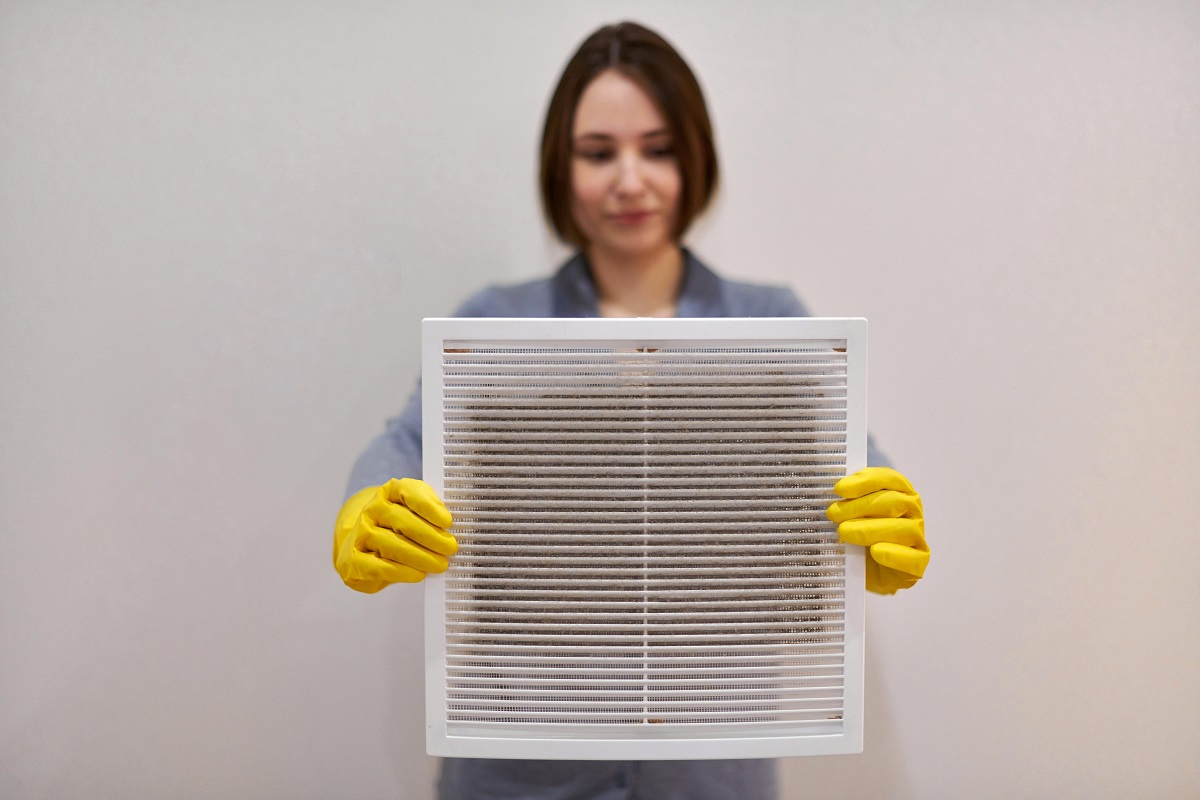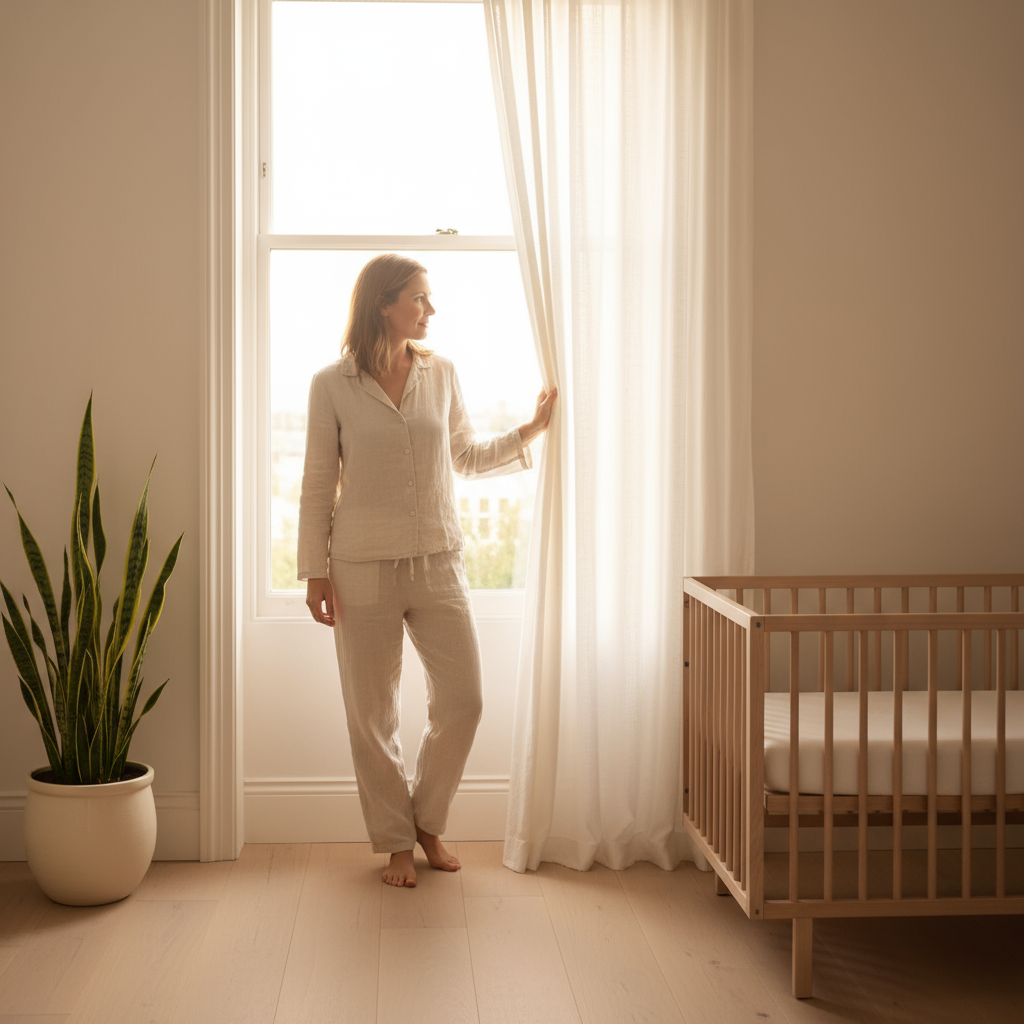The Top Benefits of a Professional Home Health Assessment

Unseen Dangers: The Critical Benefits of a Professional Home Health Assessment
- Your home can harbor hidden environmental hazards, like mold and VOCs, that are invisible to the naked eye but can impact your family's health.
- The dangers of DIY home environmental testing are significant; they often lead to inaccurate results, miss the root cause of problems, and create a false sense of security.
- The primary benefits of a professional home health assessment include accurate diagnostics from advanced technology, concrete steps for remediation, and long-term protection for your family's health and property value.
- Expert services like professional home air quality testing and mold inspection services for residential properties provide the data-driven certainty that store-bought kits cannot.
You keep your home clean and tidy, but have you ever wondered if it's truly healthy? It’s a question many homeowners think about. You dust the shelves, vacuum the floors, and scrub the counters, but there can be invisible dangers lurking in the air you breathe and behind the walls you see every day. These unseen issues, from tiny mold spores to chemical gases, can create hidden environmental hazards. The most reliable way to know for sure if your home is safe and to protect your family is by understanding the benefits of a professional home health assessment. This type of expert check-up goes far beyond what our eyes can see.
At Nestwell Technologies, we leverage our deep expertise in data analytics and process automation to solve this very problem. We’ve seen how incomplete information can lead to wrong decisions in business, and the same is true for your home. We've applied our tech-first approach to create a home assessment that goes beyond a simple check-up. We deliver a precise, data-driven analysis of your living environment, giving you the facts you need to create a truly healthy home.
Table of Contents
- Hidden Dangers in Your Home
- Dangers of DIY Testing
- Advantages of Professional Inspections
- Long-Term Benefits and FAQs
What Are the Hidden Dangers Lurking in My Home?
Your home is your sanctuary, but it may contain several common environmental hazards that you are not aware of. These problems can develop silently over time and can affect your family’s well-being without you ever knowing the source of the issue. A modern, energy-efficient home is built to be airtight, which is great for your energy bills. However, this tight seal can also trap pollutants inside, leading to poor indoor air quality and creating a space where hidden threats can grow.
Here are some of the most common dangers hiding in plain sight:
- Microbial Growth: This is a technical term for things like mold and mildew. These tiny living organisms love damp, dark, and unseen areas. You might find them growing behind wallpaper, under leaky sinks, inside wall cavities where a pipe has a slow drip, or under flooring after a small flood. When mold grows, it releases tiny particles called spores into the air. Breathing in these spores can cause allergic reactions, asthma attacks, and other respiratory problems. The musty smell you might notice in a basement is a classic sign of this hidden growth.
- Volatile Organic Compounds (VOCs): This is a fancy name for invisible gases that are released from many everyday items inside our homes. Think of the smell of a freshly painted room, a new carpet, or even a new piece of furniture. Those smells are caused by VOCs. They can also come from cleaning products, air fresheners, and even craft supplies. Because homes are so well sealed, these gases can get trapped inside and build up over time. Breathing in high levels of VOCs can cause headaches, dizziness, and irritation to the eyes, nose, and throat.
- Radon: Radon is a dangerous gas that you cannot see, smell, or taste. It is a naturally occurring radioactive gas that is created in the ground from the decay of uranium in the soil and rocks. It can seep into your home through cracks in the foundation, gaps in the floor, or through your water supply. Because it is radioactive, long-term exposure to radon is the second leading cause of lung cancer in the United States. Any home can have a radon problem, no matter its age or how well it is built.
- Allergens & Particulates: Your home’s air is filled with tiny particles. Some of these are allergens that can trigger symptoms in sensitive people. This includes common things like dust mites, pollen that drifts in from outside, and pet dander from your furry friends. When a home has poor ventilation, there isn't enough fresh air circulating to push these particles out. They get trapped and continuously cycle through the air you breathe, leading to sneezing, coughing, watery eyes, and other allergy symptoms.
Are DIY Test Kits Worth It? The Real Dangers of DIY Home Environmental Testing
When you suspect there might be a problem with your home's air or think you might have mold, it is tempting to run to the hardware store and buy a do-it-yourself test kit. They seem cheap and easy, but exploring the dangers of DIY home environmental testing reveals they often cause more harm than good. These kits promise quick answers, but the information they provide is usually incomplete and can be very misleading. Relying on them can lead you down the wrong path and prevent you from truly solving the problem.
Reason 1: They Are Prone to Inaccuracy
One of the biggest issues with store-bought test kits is that they are not very reliable. Consumer-grade kits lack the sensitivity of professional equipment. This means they can easily produce a "false negative," where the kit tells you there is no problem when a serious one actually exists. This could happen if you don’t place the test in the exact right spot or if the mold behind your wall hasn't released enough spores that day to be detected.
These kits can also create "false positives," telling you there is a problem when there isn't one, which causes needless panic and stress. Mold spores are present almost everywhere, including in perfectly clean homes. A DIY kit might detect these normal background levels and make you think you have a major infestation. Relying on a DIY kit is like trying to diagnose a complex illness with a simple thermometer—it tells you there might be a fever, but it doesn't tell you the cause, how serious it is, or what to do about it.
Reason 2: They Provide No Actionable Plan
Let's imagine your DIY mold kit does come back positive. What do you do next? The kit doesn't provide you with the critical information you need to solve the problem. It won't tell you *what kind* of mold you have, which is important because some types are more hazardous than others. It won’t tell you how concentrated the mold is in the air. Most importantly, it will not tell you where the source of the mold is.
Is it from a leaky pipe behind your shower? Is it growing in your attic because of poor ventilation? Without knowing the source of the moisture that is feeding the mold, you can *never* truly get rid of it. You might clean the surface mold you can see, but it will just grow back again and again. This leaves you with a known problem but absolutely no solution, wasting your time, money, and effort.
Reason 3: They Create a False Sense of Security
This is perhaps the biggest of all the dangers of DIY home environmental testing. If you use a kit and it comes back negative, you will likely assume your home is perfectly safe. You breathe a sigh of relief and stop worrying about that musty smell or your child's persistent cough. However, if that negative result was inaccurate, the real problem is being ignored.
A hidden leak could be continuing to rot the wood inside your walls. A serious mold colony could be growing larger, releasing more spores and further impacting your family’s health. This false sense of security prevents you from taking the necessary steps to fix the root cause of the issue. By the time you realize the DIY kit was wrong, the problem has likely become much worse and far more expensive to repair.
Why Hire a Home Environmental Inspector? The Professional Advantage
So, if DIY kits are not the answer, why hire a home environmental inspector? The answer is simple: you get certainty, expertise, and a real plan. A professional assessment is a completely different process from setting out a plastic dish from a box. It is a systematic investigation conducted by a trained expert who uses *advanced* technology to give you a complete and accurate picture of your home’s health. Instead of a guess, you get data.
You Get Certified Expertise and Training
A certified home environmental inspector has gone through extensive training. They are taught to see what an untrained eye will always miss. They can recognize the subtle signs of water damage, identify conditions that are likely to lead to microbial growth, and understand the complex ways air moves through a building.
An inspector knows where to look for hidden problems—in attics, crawlspaces, basements, and inside walls. They can spot a faint water stain on a ceiling and know that it indicates a much larger issue above. This level of expertise is something no DIY kit can *ever* replace. This training allows them to not just identify a problem but to understand why it is happening in the first place.
We Use Advanced, Data-Driven Technology
This is where Nestwell's tech background truly makes a difference. Our inspectors don't just look around; they collect precise data points using professional-grade equipment. This technology allows us to see the unseen and measure the invisible.
Our tools include thermal imaging cameras, which can show temperature differences inside walls to find hidden moisture or missing insulation. We use digital moisture meters that can measure the exact moisture content inside drywall or wood to confirm if an area is wet. For air quality, we use advanced air sampling devices that draw in a specific volume of air and trap particles on a slide. This is far more precise than a passive DIY kit. This technology-driven approach removes *all* the guesswork.
You Receive a Comprehensive, Actionable Report
After a professional assessment, you don't just get a simple "positive" or "negative" result. At Nestwell, we process all the collected data to give you a detailed report that is easy to understand. This report pinpoints the exact source and extent of any issues found in your home.
For example, if we find mold, the report will include lab results that identify the exact species and concentration. It will include photos and thermal images showing you exactly where the hidden moisture is located. Most importantly, the report provides a clear, step-by-step recommendation for remediation. It gives you an actionable plan that you can hand to a contractor, ensuring the problem is fixed correctly the first time.
A Look Inside Nestwell's Assessment Services
Understanding what happens during a professional assessment can help you see the value it provides. At Nestwell, our services are designed to be thorough, scientific, and focused on delivering clear answers. We combine expert visual inspection with high-tech data collection to create a complete health profile of your home.
Our Process for Professional Home Air Quality Testing
Our professional home air quality testing is a comprehensive process designed to analyze the air your family breathes every day. It's much more than a single test; it's a full evaluation of your home's "respiratory health."
The process begins with our inspector discussing any concerns you have, such as strange odors, allergy symptoms, or recent health issues. We then take several air samples from key areas in your home, like the master bedroom, a child's room, and the main living area. We also take an outdoor sample to use as a baseline for comparison. Our specialized equipment pulls a measured amount of air through a collection cassette. This sample is then sent to an accredited third-party laboratory. The lab analyzes the sample under a microscope to identify and count a wide range of pollutants, including different types of airborne mold spores, dust, fibers, pollen, and other particulates. We also offer testing for VOCs to check for harmful chemical gases. The final report gives you a detailed breakdown of what is in your air and at what levels, comparing it to normal standards.
Our Approach to Mold Inspection Services for Residential Properties
When mold is the primary concern, a targeted inspection is needed. Our mold inspection services for residential properties are forensic in nature, meaning they are a detailed and systematic investigation to find the truth about a potential mold problem.
First, our inspector conducts a thorough visual inspection of the entire property, from the foundation to the roofline. We look for any signs of water intrusion, past or present. This includes looking for water stains, peeling paint, warped wood, and visible mold growth. Next, we use our technology. The thermal imaging camera helps us spot temperature anomalies behind walls that can indicate hidden moisture. The moisture meter allows us to confirm if building materials are wet, even if they look dry on the surface. If we find suspected mold or areas of high moisture, we may recommend taking samples. A surface sample can be taken directly from visible growth, or an air sample can be used to see if there is elevated mold in the air. These samples are sent to the lab for analysis. This crucial step confirms the mold type and its concentration, which is critical information needed to develop an effective and safe removal plan.
What Are the Long-Term Indoor Environmental Assessment Benefits?
Investing in a professional inspection is not just about solving an immediate problem. It is about making a long-term investment in your family’s health and the value of your property. The indoor environmental assessment benefits extend far *beyond* a single report. They provide lasting value and security.
- Protect Your Family's Health
This is the most important benefit of all. By identifying and removing hidden hazards like mold and VOCs, you are creating a healthier living space. This can lead to a significant reduction in triggers for asthma, allergies, chronic coughs, headaches, and general fatigue. For families with young children, elderly members, or anyone with a compromised immune system, ensuring clean indoor air is *absolutely* essential for their daily health and comfort. A healthy home promotes better sleep, more energy, and fewer sick days. - Safeguard Your Property's Value
Your home is likely your biggest financial asset. Unaddressed environmental issues, especially moisture and mold, can cause serious damage to your property. Mold can eat away at wood, drywall, and other building materials, leading to structural rot. This kind of damage can be incredibly expensive to repair and will significantly lower your home's resale value. Having a professional report that gives your home a clean bill of health can be a major selling point. It shows potential buyers that the home has been well-maintained and is a safe, healthy place to live. - Gain Data-Driven Peace of Mind
Worrying about what you can't see creates constant, low-level stress. Is that musty smell dangerous? Are my family’s allergies caused by something in the house? A professional assessment replaces that worry with certainty. Instead of guessing, you gain peace of mind backed by scientific data. You will know for sure whether a problem exists, exactly what it is, and how severe it is. This is one of the most powerful indoor environmental assessment benefits. It empowers you to stop worrying and start taking control of your home’s environment. - Get a Clear Path to a Solution
One of the most frustrating things for a homeowner is knowing you have a problem but not knowing how to fix it. A professional assessment report from Nestwell doesn't leave you stranded. It provides a clear, actionable roadmap for remediation contractors. The report details exactly where the problem is and what needs to be done to fix the source. This saves you time and money by ensuring that the cleanup is done correctly and efficiently, preventing the problem from coming back in the future.
Ready to Breathe Easier? Your Next Steps
The truth is that the risks and dangers of DIY home environmental testing just aren't worth it when your family's health and your biggest investment are on the line. These kits often provide inaccurate information and can lead you to ignore a serious problem until it becomes much worse.
The key benefits of a professional home health assessment—accuracy, safety, and a clear plan—are the smartest investment you can make in your home and your well-being. It is the only way to get the real, data-driven answers you need to ensure your home is as healthy as it is happy.
Stop guessing about your home's health. Contact Nestwell Technologies today to schedule your comprehensive indoor environmental assessment and get the data-driven clarity you deserve.
Frequently Asked Questions (FAQ)
Q1: What are the most common hidden environmental hazards in homes?
A: The most common include mold and mildew in damp spaces like basements and bathrooms; VOCs (gases) from new furniture, paint, and cleaning products; allergens like dust and pollen trapped by poor ventilation; and in some areas, radon gas seeping up from the ground.
Q2: How often should I consider professional home air quality testing?
A: We recommend a baseline test for any home you have just moved into. After that, consider testing every 3-5 years as a general check-up. You should also test immediately if you notice new or persistent musty odors, if a family member develops unexplained allergy symptoms, or after any water damage event like a flood or a significant leak.
Q3: Is a professional mold inspection service for a residential property really necessary?
A: Absolutely. A professional mold inspection service for a residential building is the only way to confirm the extent and type of mold present. More importantly, it is designed to find the hidden moisture source causing the mold to grow. Without fixing the source, the mold will always come back. A professional plan ensures safe and effective remediation.
Q4: My DIY mold kit came back negative. Does that mean my home is safe?
A: Not necessarily. This is a primary example of the dangers of DIY home environmental testing. These kits are well-known for their inaccuracy. They can easily miss a problem that is growing behind a wall, under a floor, or has not yet released enough spores to be detected by a simple consumer-grade test. A negative result from a DIY kit can provide a false sense of security while a real problem worsens.
Q5: What makes Nestwell's indoor environmental assessment different?
A: Our assessment is built on Nestwell's core strengths: data and technology. We don't just find problems; we use advanced tools like thermal imaging cameras and professional air samplers to gather precise data. We then provide you with a comprehensive, easy-to-understand report that translates that data into a clear and actionable path to a healthier home. We replace guesswork with facts.
Key Takeaways
- Hidden Hazards Exist: Homes often conceal dangers like mold, VOCs, radon, and allergens that can harm health and property.
- DIY Kits Are Risky: Inaccurate results can miss problems or create false security, leading to worsened issues.
- Professional Assessments Deliver Value: Use advanced tech for accurate diagnosis, actionable plans, and long-term protection.
- Invest for Health and Value: Regular inspections ensure safety, maintain property worth, and provide peace of mind.
Stop testing individual problems. See the whole picture.
Ready to discover everything hiding in your air, water, and environment? Book your Comprehensive Home Health Assessment today.
Book Your Home Health Assessment Now!






